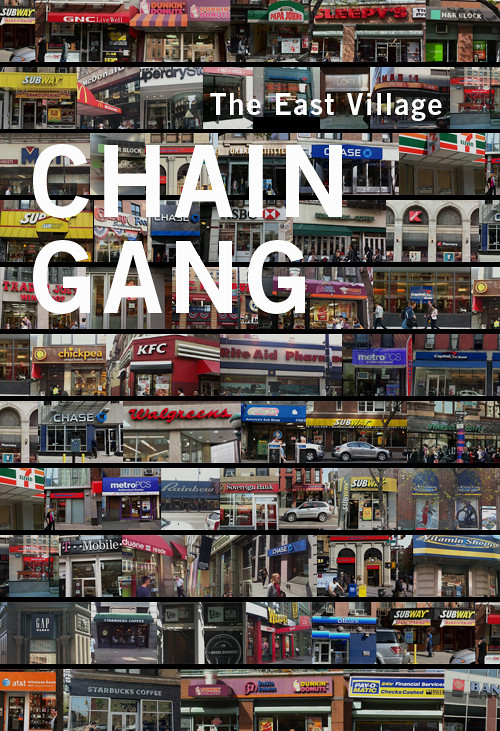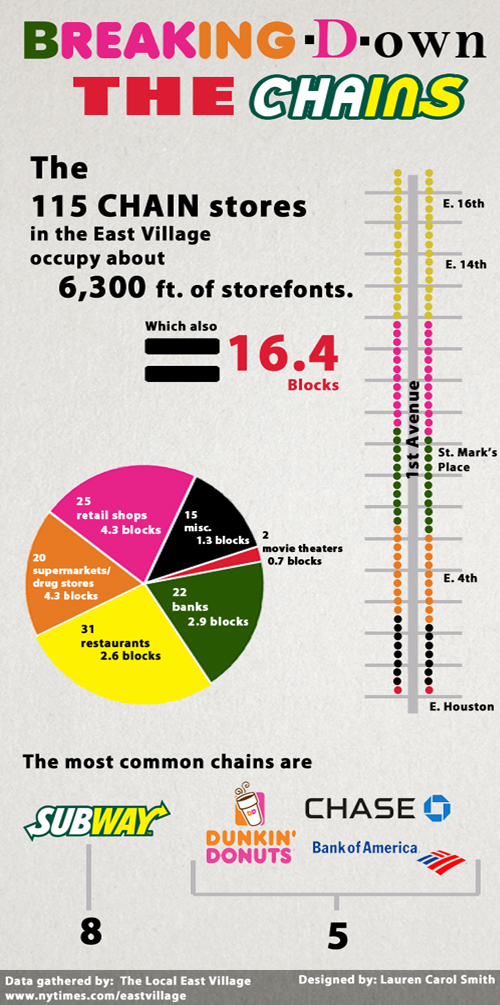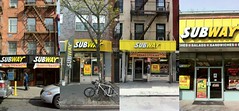There’s been much ado about chain stores lately: last month, anarchists targeted a new 7-Eleven; earlier this week, Community Board 3 continued its discussion on retail diversity; and now a petition calls for a halt to the perceived chain invasion in the East Village. But just how many chains are in the neighborhood, anyway? The Local pounded the pavement to find out.
The petition claims that “zip code 10003, which we all know as the East Village, now has the most national retail stores of any zip code in NYC (except for one that has a huge shopping mall).” Not exactly true: a recent study by the Center for an Urban Future found 169 chain retailers in the zip code, actually the third-most in the city. Since the 10003 zip includes parts of the Flatiron District and Gramercy (and only part of the East Village), the question remains: how much of the East Village do chain stores own?
Here’s what we found: if one were to place every national chain store, bank, restaurant, and movie theater in the East Village side-by-side, they would span 16 city blocks, and that’s with stores on both sides of the street.
The image of an entire East Village avenue (and then some) eaten up by chains may or not be shocking. Before we did our research, we stopped 40 people on the street to ask them how many blocks they thought the neighborhood’s chains took up. Their estimates ranged from two blocks to 100. The most common guesses were 10 blocks (9 people), 5 blocks (3 people) and 20 blocks (3 people). The average estimate: 13 blocks.
So, how did we arrive at 16 blocks?
The Local’s reporters walked every block of the neighborhood, plotting each multi-location business on the map below. We went as far east as the eastern side of Broadway and as far north as the southern side of 14th Street: sorry, IHOP. We gave chains that were born in the East Village a pass: San Loco, 16 Handles, the Bean, Eileen Fisher, and Kiehl’s, for example. And we overlooked chains like Dallas BBQ and that don’t have locations outside of New York City.
After counting 115 chain stores in the neighborhood, we added up the frontage (per the Department of Buildings) of each building where a chain was located, making rough adjustments whenever a chain store didn’t take up the entire front of the building.
That’s how we determined that, side-by-side, the East Village’s chain businesses would span 6,304 feet – more than enough to circle Tompkins Square Park twice. We can assume the buildings on a given block take up about 192 feet, since that’s the frontage of the block-long building at 58 Avenue A, according to city records. By dividing our total of 6,304 feet by 192 feet per block, we estimated that all of the chains would span almost 33 blocks. With stores on both sides of the street, that’s about 16.5 blocks.
To be fair, 6.5 of those blocks would consist of the 25 chains located on the east side of Broadway. And most of the other chains are in the 10003 zip code. In the 10009 zip code (First Avenue and points east), there are only 20 chain establishments.
Susan Stetzer, the District Manager of Community Board 3, wasn’t entirely surprised by the number of chains. “The increasing number of them is why there is discussion about them,” she told us. Still, she said that chains are sometimes necessary to meet a person’s price-point needs. “The board has never come out with a position that chains are bad or that there shouldn’t be any chains,” she said. “Just that there should be a balance.”
Ike Escava, an owner of the Bean, which was famously replaced by a Starbucks at its First Avenue location (and was doing better business than the ‘bucks at its new location, last we checked), said he used to be surprised when he’d see a chain open in the neighborhood, but not anymore. “The fact that it happened to us with Starbucks made it seem clear more were opening,” he said.
Mr. Escava added that while searching for potential locations of the Bean, he sensed that landlords preferred chain establishments. But he believes they compromise the character of the neighborhood. “Neighborhood stores give the neighborhood its personality. When a store in the East Village is the same one you’ll find in any other neighborhood, any other state, you lose the personality and the feel of the East Village. And it will never come back.”
Roll over the map to see each of the neighborhood’s chains, and tell us what you think. (You may need to refresh your browser to view the map properly.)

Reporting and photography by Evan Bleier, Stephen Rex Brown, Kathryn Doyle, Laura Edwins, Jared Malsin, Daniel Maurer, Natalie Rinn, and Lauren Carol Smith






